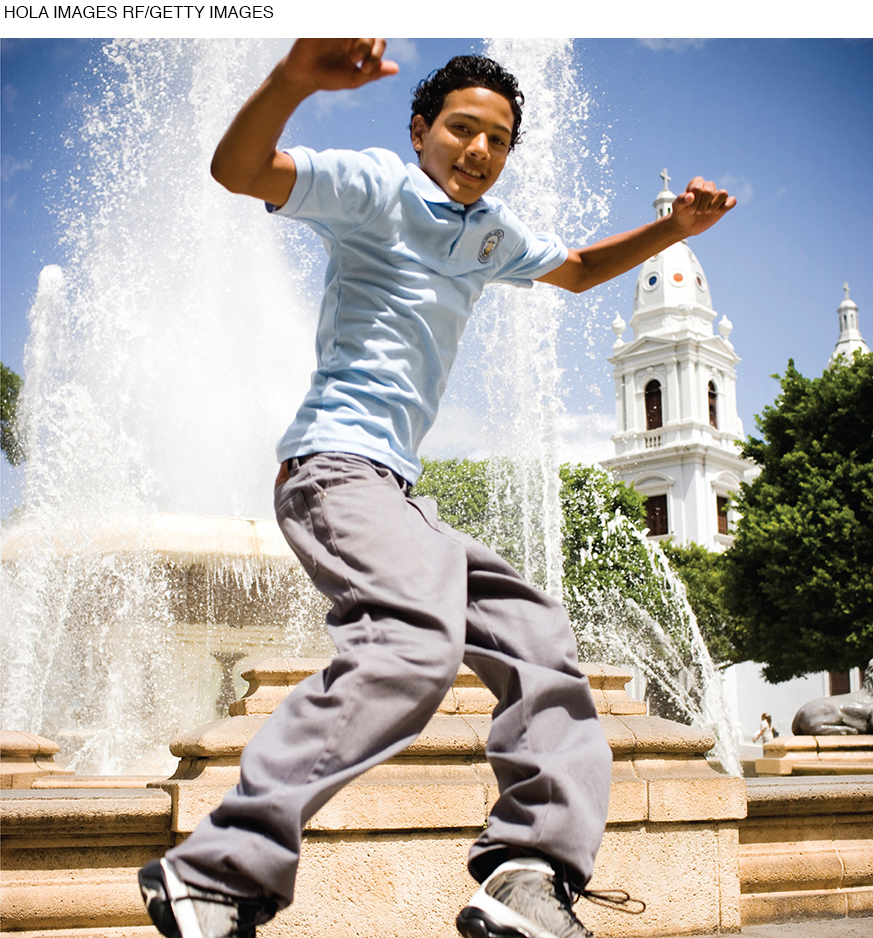Chapter Introduction

CHAPTER OUTLINE
Average Ages and Changes
OPPOSING PERSPECTIVES: Algebra at 7 A.M.? Get Real!
Many Reasons for Variations
Becoming a Grown-
Nutrition
Brain Development
A VIEW FROM SCIENCE: The Pleasures of the Adolescent Brain
Formal Operational Thought
Two Modes of Thinking
A CASE TO STUDY: “What Were You Thinking?”
Digital Natives
Middle School
Older Adolescents in School
CHAPTER 9
Adolescence
Body and Mind
WHAT WILL YOU KNOW?
What makes a particular child reach puberty early or late?
How can teenagers be both logical and impulsive?
Why does bullying increase in middle school?
Video: Adolescence Biosocial Development: A Brief Overview
I have taught at four universities, educating thousands of college students. Most of the content is standard. That allows me to focus on current examples, adjusting to the particular students. No class is exactly like any other. Group dynamics change, in part because of the individuals in the class.
A few years ago, I taught a course for college credit to advanced high school students. I realized they were teenagers not because of their size (they were as big as college students) but because of their grooming (most were carefully dressed, some wore makeup, a few were deliberately unkempt). They grasped concepts quickly, they studied diligently, they completed papers on time—
One day I was explaining Freud’s stages.
Student: I don’t agree with Freud.
Me: You don’t have to agree, just learn the terms and concepts.
Student: Why should I do that?
Me: You need to understand Freud, so you can then disagree.
Student: But I have my own ideas, and I like them better than Freud’s.
I was taken aback. None of my college students had ever been so egocentric as to claim that their own ideas were so good that they didn’t need to bother with Freud. They did not usually agree with psychoanalytic theory: Some expressed insightful critiques. But none told me they wouldn’t learn something because they liked their ideas better.
Then I remembered: Bright as they were, these students were adolescents.
This chapter describes adolescent growth and cognition, including how adolescents think about their bodies and how their minds work. Rapid growth in body and brain sometimes clashes with adult assumptions about how a grown person should act.
puberty
The time at the end of childhood between the first onrush of growth hormones and full adult size. Puberty usually lasts three to five years. Many more years are required to achieve psychosocial maturity.